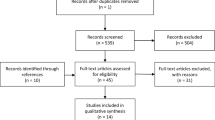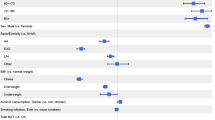Abstract
Aim
The aim of the study was to evaluate any social, occupational and physical factors, which may influence the occurence or cause of a primary inguinal hernia in two European countries.
Methods
A questionnaire was completed by all the respondents in the setting of an out-patient clinic prospectively at the time of initial presentation and the data were collected on a secure database. All responses for each question were explored via appropriate descriptive statistics. Statistical comparisons were made using Fisher’s exact test where appropriate.
Results
537 adults completed the questionnaire and had their data analysed. Comparisons between those that presented with a primary complaint of either ‘bulge/swelling’ or ‘discomfort/pain’ found no differences in occupation, age or any other demographic data. Equal proportions of patients who described a single strenuous event presented with a bulge/swelling or discomfort/pain. The reporting of a causative single strenuous event was not significantly influenced by occupation, lifestyle or amount of activity carried out nor was there any significant influence upon when a hernia presented after the suspected strenuous event, although the majority reported a lump within 1 week.
Conclusion
This study cannot at present support the belief that a single strenuous event will be the sole cause for the development of a primary inguinal hernia.
Similar content being viewed by others
References
Group H (2018) International guidelines for groin hernia management. Hernia: J Hernias Abdominal Wall Surg 22(1):1–165
Smith GD, Crosby DL, Lewis PA (1996) Inguinal hernia and a single strenuous event. Ann R Coll Surg Engl 78(4):367–368
Vad MV, Frost P, Bay-Nielsen M, Svendsen SW (2012) Impact of occupational mechanical exposures on risk of lateral and medial inguinal hernia requiring surgical repair. Occup Environ Med 69(11):802–809
Svendsen SW, Frost P, Vad MV, Andersen JH (2013) Risk and prognosis of inguinal hernia in relation to occupational mechanical exposures–a systematic review of the epidemiologic evidence. Scand J Work Environ Health 39(1):5–26
Carbonell JF, Sanchez JL, Peris RT, Ivorra JC, Del Bano MJ, Sanchez CS et al (1993) Risk factors associated with inguinal hernias: a case control study. Eur J Surg = Acta Chirurgica 159(9):481–486
Liem MS, van der Graaf Y, Zwart RC, Geurts I, van Vroonhoven TJ, The Coala Trial Group (1997) Risk factors for inguinal hernia in women: a case-control study. Am J Epidemiol 146(9):721–726
Sarosi GA, Wei Y, Gibbs JO, Reda DJ, McCarthy M, Fitzgibbons RJ et al (2011) A clinician’s guide to patient selection for watchful waiting management of inguinal hernia. Ann Surg 253(3):605–610
Sheen AJ, Stephenson BM, Lloyd DM, Robinson P, Fevre D, Paajanen H et al (2014) ‘Treatment of the sportsman’s groin’: British Hernia Society’s 2014 position statement based on the Manchester Consensus Conference. Br J Sports Med 48(14):1079–1087
Sheen AJ, Iqbal Z (2014) Contemporary management of ‘Inguinal disruption’ in the sportsman’s groin. BMC Sports Sci Med Rehabil 6:39
Abrahamson J (1998) Etiology and pathophysiology of primary and recurrent groin hernia formation. Surg Clin North Am 78(6):953–972
Aren A, Gokce AH, Gokce FS, Dursun N (2011) Roles of matrix metalloproteinases in the etiology of inguinal hernia. Hernia: J Hernias Abdominal Wall Surg 15(6):667–671
Shaw TJ, Martin P (2009) Wound repair at a glance. J Cell Sci 122(Pt 18):3209–3213
Velnar T, Bailey T, Smrkolj V (2009) The wound healing process: an overview of the cellular and molecular mechanisms. J Int Med Res 37(5):1528–1542
Henriksen NA, Yadete DH, Sorensen LT, Agren MS, Jorgensen LN (2011) Connective tissue alteration in abdominal wall hernia. Br J Surg 98(2):210–219
Smigielski J, Brocki M, Kuzdak K, Kolomecki K (2011) Serum MMP 2 and TIMP 2 in patients with inguinal hernias. Eur J Clin Invest 41(6):584–588
Pascual G, Rodriguez M, Gomez-Gil V, Trejo C, Bujan J, Bellon JM (2010) Active matrix metalloproteinase-2 upregulation in the abdominal skin of patients with direct inguinal hernia. Eur J Clin Invest 40(12):1113–1121
Schofield PF (2000) Inguinal hernia: medicolegal implications. Ann R Coll Surg Engl 82(2):109–110
Sanjay P, Woodward A (2007) Single strenuous event: does it predispose to inguinal herniation? Hernia: J Hernias Abdominal Wall Surg 11(6):493–496
Patterson T, Currie P, Spence R, McNally S, Spence G (2018) A systematic review of the association between a single strenuous event and the development of an inguinal hernia: a medicolegal grey area. Surg: J R Colleges Surg Edinb Irel 16:309–314
Devlin HB (1987) Management of abdominal hernias. Butterworth, London
Acknowledgements
Mr Brian Stephenson—Royal Gwent Hospital, Newport, South Wales, U.K. Mr Panagiotis Petras—Hippocrates Hospital of Thessaloniki, Greece. Mr Anselm Agwunobi—Manchester Foundation NHS trust, Manchester, U.K.
Author information
Authors and Affiliations
Corresponding author
Ethics declarations
Conflict of interest
The authors have no conflicts of interest.
Ethical approval
No ethical approval was required as stated within manuscript.
Human and animal rights
Not applicable.
Informed consent
Not applicable.
Additional information
Publisher's Note
Springer Nature remains neutral with regard to jurisdictional claims in published maps and institutional affiliations.
Appendix 1: Groin Hernia Questionnaire (UK version)
Appendix 1: Groin Hernia Questionnaire (UK version)



Rights and permissions
About this article
Cite this article
Pilkington, J.J., Zahid, M.S., Fullwood, C. et al. Contemporaneous evaluation of inguinal hernia causation: a European perspective. Hernia 24, 591–599 (2020). https://doi.org/10.1007/s10029-019-02107-3
Received:
Accepted:
Published:
Issue Date:
DOI: https://doi.org/10.1007/s10029-019-02107-3




